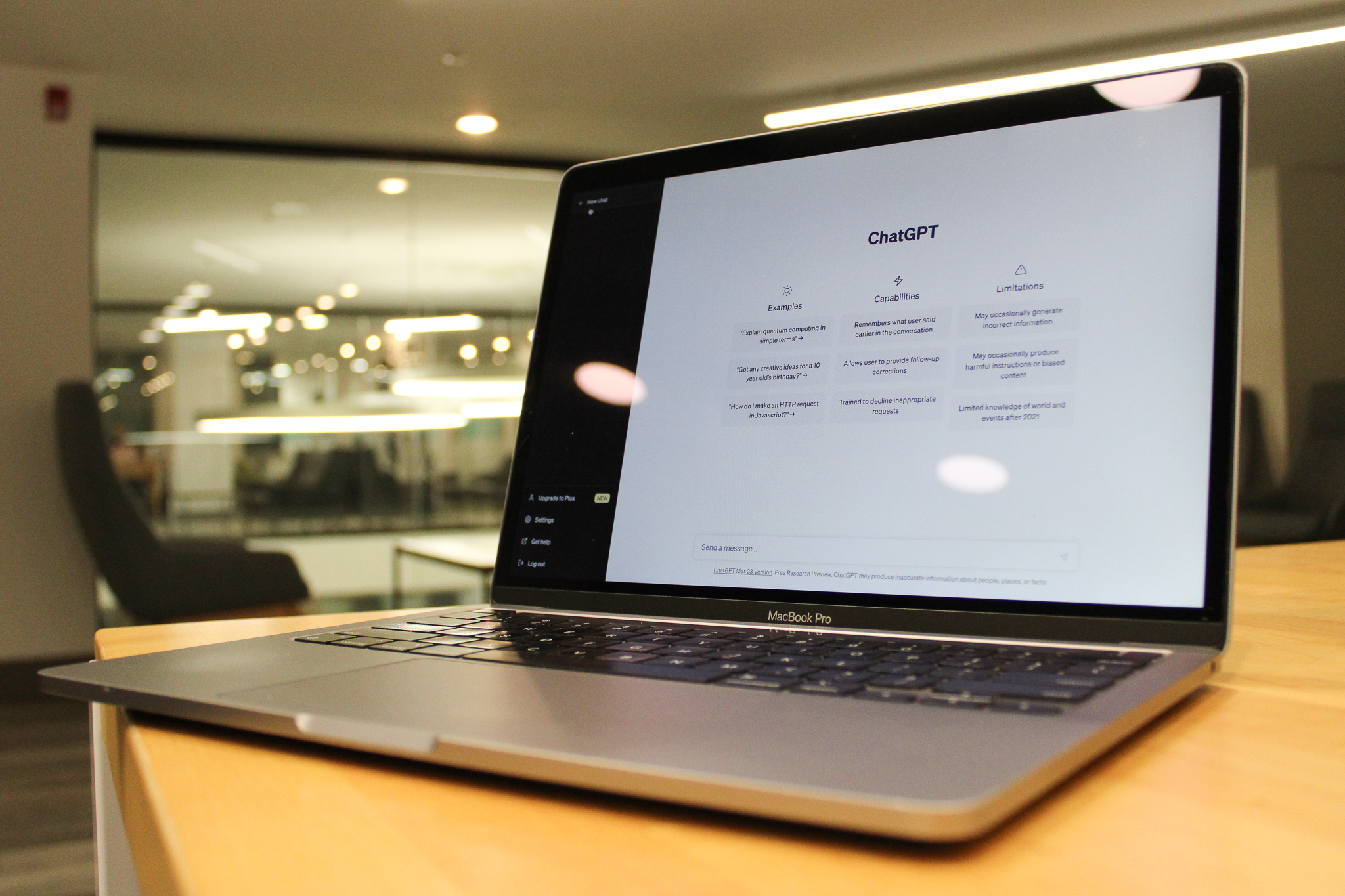We think of artificial intelligence as many different things. It’s the algorithms that determine what’s in our social media feed. It’s what recommends us movies on Netflix or music on Spotify. It’s our voice assistants, such as Alexa and Siri. And most recently, it’s associated with all-encompassing tools, such as ChatGPT, Baird, DALL-E and more.
“An AI system is basically any sort of automated system whose behavior is at least in part dictated by data that it has been … exposed to in some way,” said Hal Daumé III, a computer science professor at the University of Maryland.
With the rise of artificial intelligence tools, college communities have needed to explore what this technology means for curriculums and grading. While these tools provide some challenges for plagiarism detection in classrooms, they also provide aid for students in their everyday lives.
Daumé uses Google Translate fairly frequently to communicate with his in-laws, as well as Netflix’s recommendation algorithm, online shopping algorithms and Siri for simple tasks. He also played around with ChatGPT and DALL-E for class.
“I do use it occasionally when I’m writing homework or exam questions to see how easy it is for ChatGPT to answer them,” he said. “Sometimes I change around or if it’s too easy, sometimes I don’t. It’s more of a sort of curiosity than anything else.”
Snehesh Shrestha, a computer science doctoral student, has a thesis focused on using artificial intelligence to empower teachers and students in music education. The tool he uses the most regularly is GitHub Copilot, a large language model specifically designed for code.
[TikTok star Chris Olsen talks fame and the mundane at SEE’s Spring Lecture]
“It just makes my coding experience much smoother and faster,” he said. “For example, it does a … really great job with autocomplete, but we definitely have to watch out for the recommendation that it provides … for two reasons: sometimes it can be wrong and then secondly, sometimes it might not be as efficient.”
Senior information science major Steven Clark uses the application programming interface released by ChatGPT to create a bonsai teacher to help him with his hobby.
These tools can also lead to a lot of fear and frustration when they start to change something we use or do. Clark used cars as an example of technological advances changing up the norm. As cars became the new norm of transportation, they replaced horses, which are now primarily owned by wealthier people as a hobby or by communities that still use them for labor.
“I think that stuff like this happens all throughout human history where a new technology comes around and it becomes scary, and it changes the paradigm of how people operate in a society,” Clark said.
While artificial intelligence has been around for years and is already incorporated into products we use daily, the introduction of recent tools, such as ChatGPT and DALL-E, have felt next-level and almost threatening.
Shrestha said it might have something to do with artificial intelligence beating our expectations of it.
“There was an emergence of certain properties that was very surprising from a baseline expectation,” he said. “As soon as something beats our expectation … by a large amount, it’s a natural instinct for our definition for something to be called smart.”
He used a plate being carried by a dog and a person as an example. If a dog picked up a plate and brought it to you, you’d think it was brilliant. If a human did the same thing, you wouldn’t be as impressed. The dog surpassed your expectation, which is why the same task seems so amazing.
[Can UMD students handle Pedro Pascal’s insane coffee order?]
Daumé suggested that tools such as ChatGPT and DALL-E plug us directly into the artificial intelligence, instead of operating from a distance and under-the-hood like many other tools and algorithms.
“I think this sort of open endedness maybe makes it feel different to people than these previous things, which maybe felt more like sort of one-off tools,” he said.
Shrestha imagines the future of artificial intelligence tools as more specific to a particular task, with more interaction between the human and the computer. He compared it to how Iron Man interacts with J.A.R.V.I.S., the artificial intelligence system Tony Stark uses in the Marvel franchise. J.A.R.V.I.S. assists Stark with his work, but when J.A.R.V.I.S. can’t meet a specification, Stark does it manually himself.
Clark also believes artificial intelligence doesn’t look like it’s going to go away any time soon.
“I think it’s going to change a lot as far as the kind of tasks that people are going to do for work,” he said. “I think that a lot of really simple stuff is just going to be automated.”



